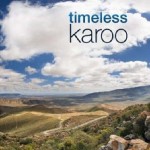San Rock Engravings – Marking the Karoo Landscape
By John Parkington with photography by Neil Rusch
Published by Struik Travel & Heritage
Hardcover: 128 Pages;180 x 200mm, 80 full-colour photographs. About R210.00
Before I say anything, let me confess: prior to finding this book, Rock Art was something I just vaguely associated with the paintings at Vredefort Dome (‘Cradle of Mankind’, if you will). And I’ve never set foot in the Karoo. Quite embarrassing actually, considering that I’m a born and bred South African. I’m mentioning all this because, simply put, ‘San Rock Engravings’ has introduced me to an entirely new and profound aspect of South Africa’s heritage, a side of our country I really ought to get to know better.
Prehistoric Rock Art is found throughout the world, but South Africa holds possibly the richest and most important of them all. Among these, rock paintings make up the majority. This book, however, looks at the curious and lesser known engravings (or petroglyphs) of the Karoo.
Dr Parkington’s research is predominantly based on hypotheses (quite obvious when there’s no-one left to question on the subject), but the conclusions he draws from the few facts at hand seem logical and suggest that the San were a much more advanced race than we’ve previously been lead to believe.
It’s really quite fascinating to imagine the precision and skill it must have taken to create such accurate illustrations.
Does anyone observe nature these days in quite the same way, with the same intuition, that the San did all that time ago? I’ve come to believe that the gradual extinction of the San – through forced removal and execution by colonists – is perhaps the greatest loss of cultural heritage our continent has ever seen. This book reminds me of how fortunate we are to still be able to follow the traces of the ancestors of our nation.
If you’ve never been to the Karoo, you don’t need to know anything about it to grasp the grandeur of this marvel: the photography focuses on the details but still provides a broad perspective of the landscape, allowing the reader to understand how the various locations and sites follow a pattern.
I enjoyed the read, as Dr Parkington explains his theories in a scientific manner yet remains on ‘eye-level’ with the reader. The imagery is accompanied by pithy San anecdotes and legends, which make the book all the more charming and original.
I can imagine this book would delight any fan of rock art or world heritage. I found it exciting, informative and visually fascinating. It’s everything quality photojournalism is about and it definitely belongs in your curio shop and guest library. – Liesa Belling
Buy it here








No user commented in " San Rock Engravings – Marking the Karoo Landscape "
Follow-up comment rss or Leave a Trackback